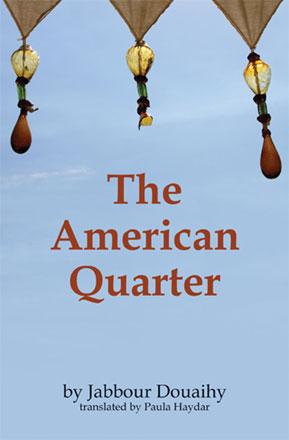You are here
Haunting interludes
By Sally Bland - Apr 15,2019 - Last updated at Apr 15,2019

At the Edge of the Night
Friedo Lampe
Translated from the German by Simon Beattie
London: Hesperus Press, 2019
Pp. 123
Some novels rely on a fast-moving plot to capture and hold the reader’s attention, but this short book hardly has a unified plot. Instead, German author Friedo Lampe draws the reader into a world of his creation by evoking a mood, an atmosphere, a state of being, with his softly poetic prose and ability to create vivid mental pictures.
Now close to a century after it was written, the first English edition of “At the Edge of the Night” transports the reader to Bremen, the author’s hometown, in northern Germany, to observe the behaviour of a number of seemingly random people, and the interaction between them. Some of the characters know each other, may even be neighbours or friends; others do not, but all are united by a warm September evening on the banks of the river that flows through the town.
Some of the action in the book is highly dramatic; at other times, it is quite subdued and commonplace. What is unusual about Lampe’s style is how he shifts abruptly from one scene or set of characters to another. In the translator’s introduction, Simon Beattie explains these abrupt shifts by noting Lampe’s “keen interest in the cinema” and his wish to replicate its techniques in literature; Lampe intended that everything be “only loosely connected, graphic, lyrical…” p. (ix)
That the story unfolds in such a short time span — an evening that slides into night — is also more typical of a film than a novel.
Despite getting only glimpses of the characters, each one is described in concrete detail. There are no general sketches here; every character is highly individualised. Though there are characters of all generations in the book, death and the loneliness of the elderly seem to predominate in the narrative. Even when children are the focus of a scene, there often seems to be something negative or even perverse. In the opening, children wait for a glimpse of rats at the pond, while the child who gets most attention is being exploited by his own father in a variety show.
There are fleeting romantic encounters, while most marriages seem more routine than a source of joy. Characters who sympathise with more unfortunate ones are often berated by their friends, whether out of class snobbishness or a vague fear of being different. Meanwhile, a lone flute player continues his melody undisturbed by the fact that the man in the apartment below is dying. A number of characters seem to fit the description attached to the sons of a geography teacher, who are bored with his reading aloud to them — “weary and dream-befuddled”. (p. 26)
Similarly emblematic of the tone of the novel is an old man who sits alone reading, kept company only by the stuffed birds on the wall: “His favourites which had died. The birds, dead or alive, were the only things left for him. His wife was dead, and he had thrown his daughter out of the house.” (p. 36)
Was Lampe disturbed by humans’ unkindness and lack of unfeeling to each other, or by his perception of the looming prospect of fascism’s cruelty, or both? In any case, it is certain that he had great empathy for his fellow human beings in their dramatic or mundane misfortunes.
The tone of the novel is nostalgic and haunting, rather than depressing, and the author even inserts a few dream passages, resembling magic realism, into an otherwise ordinary reality, without skipping a beat.
As the translator asserts, “Lampe had spent a life in books — as reader, collector, librarian, editor and writer — but it was a life of struggles and setbacks that ultimately ended in tragedy”. (p. vii)
Many of his colleagues in the literary world were persecuted or fled when the Nazis took over, but he somehow managed to stay on, only to be killed tragically, ironically, almost accidently, a few days before World War II ended.
The original German edition of “At the Edge of the Night” was published in 1933, the same year the Nazis came to power, and they immediately banned it for its intimation of sexual attraction between men, and between a German woman and a black man.
It was not republished in German until 1999, and this is the first English edition. Reading it today, one is captivated by its beautiful style, its haunting imagery, its insight into human frailties, and its recreation of a world that is no more.
Related Articles
There is an unusual, haunting love story intertwined with a coming-of-age novel, both infused with elements of myth, science fiction, philosophy and multiple cultural references.
The American QuarterJabbour DouaihyTranslated by Paula HaydarUS: Interlink Books, 2018Pp.
Oh, Salaam!Najwa BarakatTranslated by Luke LeafgrenUS: Interlink Books, 2015Pp.

















